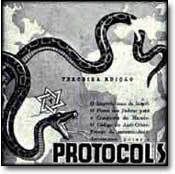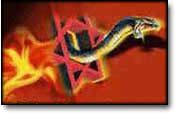Israel Increases Pressure on U.S. to Act on Iran
Cases of violent vandalism are multiplying against Arab villages and places of worship.
Standing in front of his house in this Arab-Israeli village west of Jerusalem, Ibrahim Hatem stares in disbelief: “I don’t understand. I am Israeli. I like this country. On my street, my neighbors are all Jewish.”
On June 18, Ibrahim Hatem became yet another victim of the “price tag” movement, which has been gaining momentum lately and performing acts of vandalism all over the country. In Abu Gosh, about 30 cars had their tires slashed during the night. Graffiti reading “Arabs out,” and “racism or assimilation” was spray-painted on the walls.
And yet, of all Arab villages, Abu Gosh is perhaps the most loyal to Israel – it was the only Palestinian village to side with Israel in 1948. “If those who committed these crimes want to make the country implode, they chose just the right place to do it,” worries Hatem.
This attack on a symbol of Arab-Israeli coexistence puts the government in an increasingly uncomfortable situation. On June 16, Prime Minister Benyamin Netanyahu refused to classify the authors of this racist vandalism as “terrorists,” against the wishes of Justice Minister Tzipi Livni who had been advocating for the classification of the attacks as “acts of terror.”
In the past month, attacks have been multiplying in Israel and in the West Bank. They have been attributed to Jewish radicals from the Hilltop Youth movement, a group of second-generation settlers, proponents of a “Greater Israel” – from the Mediterranean Sea to the Jordan River. The modus operandi is usually the same: slashed tires, burnt cars and “price tag” graffiti, which often mention Eviatar Borovsky, a father of five from the West Bank settlement of Yitzhak who was stabbed by a Palestinian while waiting for a bus on April 30.
Acts of revenge between Palestinians and West Bank settlers are nothing new – the expression “price tag” first appeared in 2008. Their objective is to respond eye for eye to every attack against Israeli settlements. They justify their actions by saying they are “exacting a price” after acts perpetrated by the Palestinians against them or after moves by the Israeli security forces to dismantle illegal settlement outposts.
The concept was theorized in a 2009 book called Torat Hamelech (“The King’s Torah”), written by extremist rabbis who argued that killing non-Jews is acceptable as part of a religious war. Coincidence? After this inflammatory book was published, the number of attacks against Palestinians went up 144% between 2009 and 2011.
 |
| "Arabs out" price tag in Abu Gosh - Photo: reshettv |
Targeting places of worship
In addition to these assaults, what is most striking is how fast the “price tag” concept has been spreading. “It has now largely overtaken its initial concept of taking back the West Bank, and even the issue of settlements. It has become a way to express the hatred of minorities,” explains Barak Weiss, coordinator of the Tag Me’ir group, which fights against this growing phenomenon. Since September 2011, he says, 25 “price tag” attacks have been perpetrated inside Israel’s Green Line, particularly in Arab-Israeli towns.
Since the beginning of 2012, more and more of these attacks have been targeting places of worship, including Christian churches. On May 31, 2013, the phrase “Christians are monkeys” was spray-painted on the walls of the Benedictine Dormition Abbey on Mount Zion in Jerusalem. On June 13 in Tel Aviv, tombstones were vandalized in the Christian Orthodox cemetery, in the historic district of Jaffa. More
![[9_10_s22.jpg]](http://3.bp.blogspot.com/_s5yaZ0Ye2Mo/R3slhl7bTtI/AAAAAAAAG4o/pXTUHusKJIg/s1600/9_10_s22.jpg)




No comments:
Post a Comment